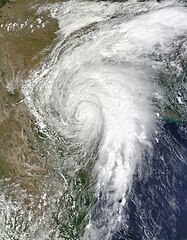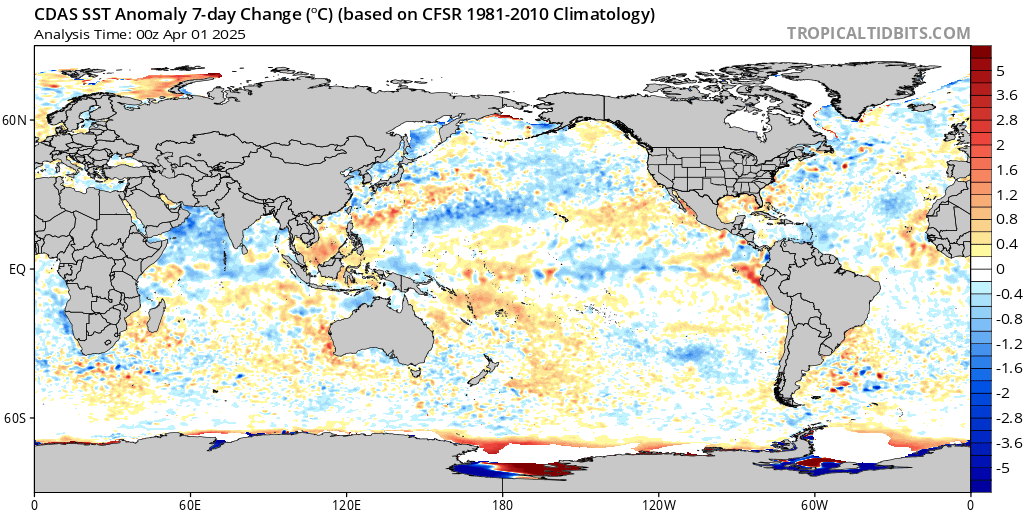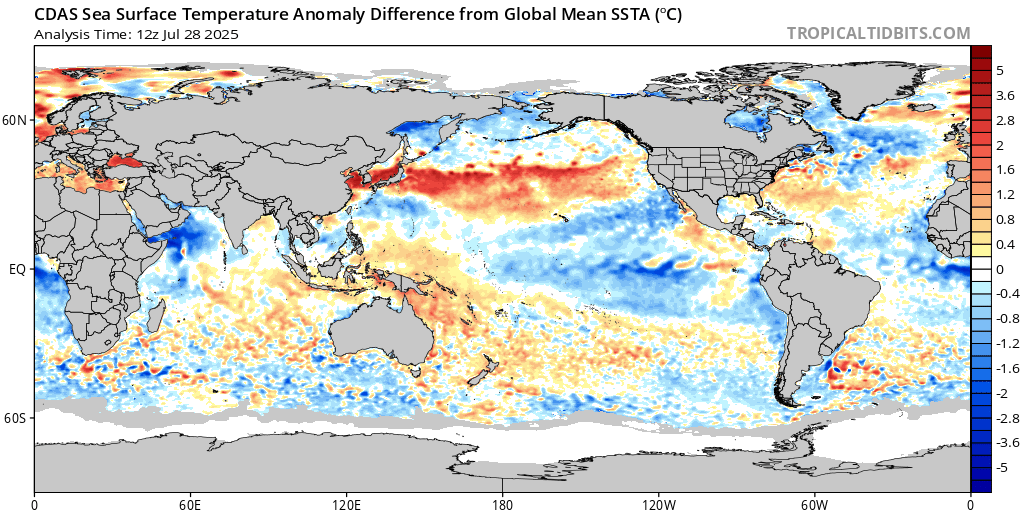That study shows where its results fail the 95 percent confidence interval test; yet, the study generally does not discuss those areas in any detail. MPI–GE is the only model used that shows statistical significance for Texas.
One downside to the study's methodology is the assumption of normality in temperature distributions, which are most decidedly NOT normal (Gaussian).
Generally, I think the study is useful.
On decadal timescales, Pacific Decadal Variability in the North Pacific Ocean is described by the Pacific decadal oscillation (PDO). The PDO partly results from remote tropical forcing from ENSO itself, which is reddened by local ocean reemergence processes, where anomalies sequestered below the summer mixed layer are re-entrained in the mixed layer the following winter, increasing the anomaly persistence from winter-to winter. Processes independent of the tropics such as interactions between the Central North Pacific wind forcing and the Kuroshio-Oyashio Extension that occur via slow westward propagating oceanic Rossby waves are also important for the PDO. ... During a PDO positive phase, El Niño circulation anomalies intensify. Specifically, the Aleutian Low further deepens, concurrent with an additional intensification of the Pacific jet between 20 and 30N. Associated with the deepening of the Aleutian low, extra warmer air from the lower latitudes moves up over north-western Canada and Alaska and acts to amplify the El Niño warm anomalies. Higher pressure over the continental land surface also contributes to these enhanced warm anomalies. Fewer cold air outbreaks occur over the land surface when the surface pressure is higher. Furthermore, the additional intensification of the Pacific jet brings increased rainfall to the California coast line associated with an increase in the storm tracks. In contrast, when the PDO is negative, El Niño circulation anomalies are weakened, resulting in the opposite effect on both teleconnections. Similarly, the PDO has the opposite effect on the atmospheric circulation during a La Niña compared to the effect on an El Niño event. For instance, a negative PDO enhances the anomalous La Niña atmospheric circulation, while a positive PDO diminishes it. ...While the two phases of the PDO have opposing effects on ENSO events, the probability of an El Niño occurring during a positive PDO is higher than during a negative PDO. In contrast, the probability of a La Niña occurring during a negative PDO is higher than during a positive phase. This result highlights that the PDO is more likely to act to amplify ENSO events than diminish them. Strong El Niños (Niño3.4 > 1) show the same effect, i.e. they are also more likely to occur in a positive phase of the PDO than a negative PDO, meaning strong ENSO events are also more likely to be amplified than diminished by the PDO in agreement with previous studies.













